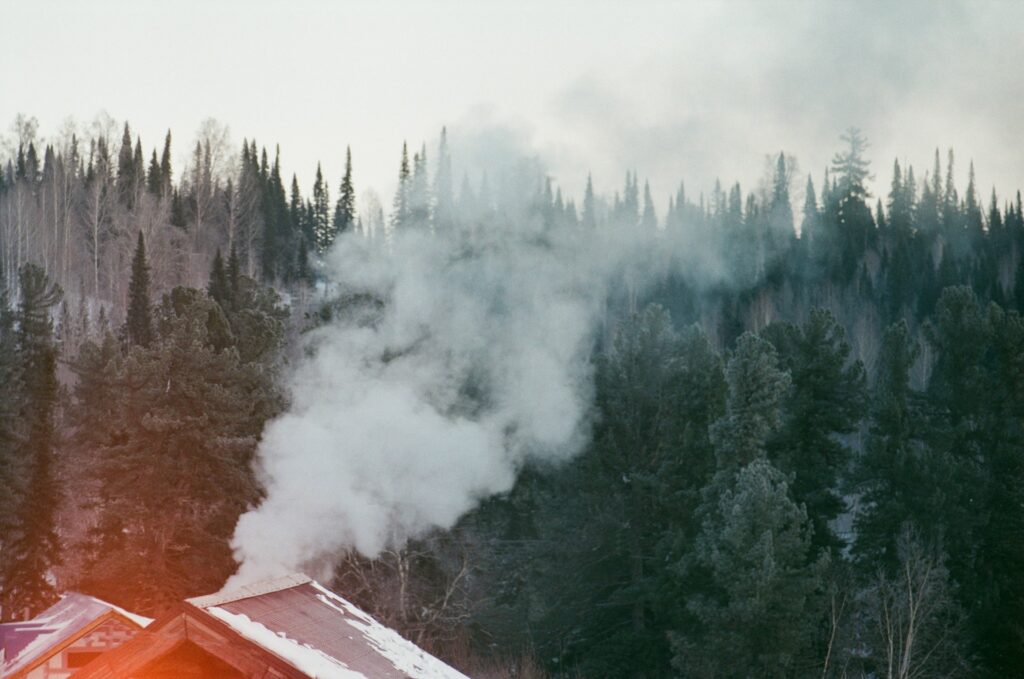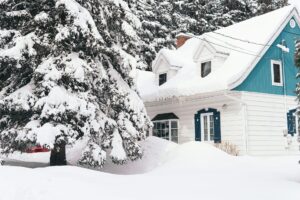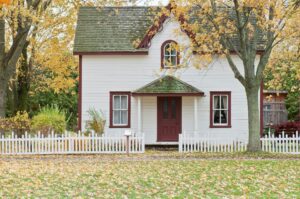Nature in Southern Oregon is famously dynamic, one month, we’re vigilant about wildfire risk, and the next, we’re contending with heavy autumn rains. This swift shift can leave homeowners in a bind, especially if they haven’t prepared their roofs for both fire and water impacts. Throughout Medford, Ashland, Grants Pass, and surrounding Southern Oregon communities, transitioning from the hot, dry conditions of late-summer to the wet, stormy weather of fall and winter requires a smart, thorough approach to roof maintenance.
Below, we explore the critical steps involved in moving from September’s wildfire concerns to October and November’s rain preparation. You’ll learn how to spot and address fire-related damage, protect your home from seasonal storms, and keep your roof functioning at its best all year round. By taking action sooner rather than later, you’ll help your home flourish through any challenge Southern Oregon’s climate can bring.
The Impact of Wildfire Season
Medford and the broader Southern Oregon region often face significant wildfire risk during the late summer. It’s a time of heightened awareness, everyone keeps an eye on smoke conditions, while local authorities issue advisories to protect health and property. Even if the flames never reach your home, the consistent presence of ash, floating embers, and heat can still affect your roof’s integrity.
• High temperatures can accelerate wear on shingles and seals.
• Ash and debris can settle on surfaces, potentially collecting in small crevices.
• Embers can land on or near a roof, sometimes leaving behind scorch marks.
Many Southern Oregon homeowners assume that the official end of the wildfire season also means the end of roof troubles, yet the transition to autumn rains can aggravate any hidden compartments of ash and debris, turning small issues into big leaks. A proactive inspection is key to catching and resolving those vulnerabilities while the weather still allows for comfortable roof work.
Checking for Ash, Debris, and Ember Impacts
After a long, smoky season, it’s common for ash to accumulate on rooftops and inside gutters. Even small amounts of debris can clog drains during heavy rain. Here are a few tips for addressing these issues:
• Clear visible ash using a soft brush or low-pressure wash. Harsh pressure-washing can loosen shingles and cause water intrusion under flashing.
• Inspect vents and skylights for evidence of residue. Embers sometimes enter small openings, so verify that vent screens are in good condition.
• Look for discoloration or mild scorching on the underside of your roof eaves. This can hint at embers that may have landed near your home.
If you spot deeper concerns, such as heat warping on roof sections or cracking seals around flashing, arrange for a professional rooftop consultation. Embers can compromise your roof’s barrier in hidden ways, so it’s helpful to let trained eyes confirm any repairs.
For an in-depth understanding of how wildfire embers travel and land on roofing materials, the National Fire Protection Association offers strategies to reduce risks and enhance property safety.
Gutter Maintenance and Why It Matters
Gutters are the unsung heroes of a healthy residence. In a season marked by sudden rainstorms, clogged gutters can quickly overflow, potentially damaging both your roof and your home’s foundation. A thorough gutter cleaning in early fall is one of the most important steps you can take to ensure water flows smoothly off your roof.
• Ash and burnt debris can form a sludge if mixed with water, leading to blockages.
• Leaves and pine needles have likely accumulated over the summer, adding to the risk of overflow.
• Pests sometimes nest in debris-filled gutters, compromising water flow further.
By clearing out gutters before the heavier autumn rains arrive, you prevent water from backing up under shingles or over your fascia boards. This reduces the risk of moisture entering your attic and walls.
Getting Ready for Winter Storms
Southern Oregon’s winter storms can range from light drizzles to sudden downpours and occasional snowfall, depending on the elevation. Taking preventative measures in the fall can be a lifesaver when fierce winds and slanting rain arrive. Here’s how to safeguard your roof from storm damage:
• Inspect flashing. Make sure all flashing around chimneys, skylights, and vents is secure and watertight. Damaged, corroded, or missing flashing is a major source of leaks during winter storms.
• Look for missing or curling shingles. Winter winds can exploit any gap and rip off shingles, so replace or re-secure weak areas now.
• Evaluate nearby trees. Keep limbs trimmed so they don’t hang directly above your roof. During winter storms, branches can break and damage roofing materials.
• Fix minor leaks. If you have any known leaks, no matter how small, address them promptly. A minor drip can grow into a serious water intrusion during a storm.
Winter storms in Medford sometimes coincide with rapid temperature shifts. That can mean ice dams if standing water freezes along roof edges, or condensation issues if your attic isn’t properly ventilated. Getting these areas in check before the first cold snap greatly reduces the likelihood of damage.
Fall Roof Inspection Timeline
Preparation is most effective when it’s precisely timed. Mapping out a fall roof inspection schedule helps you ensure nothing slips through the cracks:
- Late September: Begin clearing exterior debris. Remove pine needles, leaf buildup, or stray branches that may have gathered during the summer. Ensure you’ve addressed any ash accumulation from wildfire season.
- Early October: Schedule a formal roof inspection with a trusted local contractor, such as HOMEMASTERS in Medford. Professionals can access hard-to-reach areas where damage often goes unnoticed by the untrained eye.
- Mid to Late October: Review the inspection report (or personal checklist) and promptly tackle recommended repairs. Change out weakened shingles, reseal or replace damaged flashing, and confirm that gutters are free of blockages.
- Early November: Perform a final roof walk-around. Confirm that all repairs are complete, confirm your gutters flow smoothly, and test downspouts for drainage.
By systematically working through these steps, you position your home to transition seamlessly from drier conditions to the heavier moisture of late autumn and beyond.
Roofing Materials Comparison
Not all roofing materials react to fire and rain in the same way. Understanding how your chosen roof type handles Southern Oregon’s climate can help you tailor your maintenance routine accordingly. Below is a brief comparison of common roofing materials:
| Roofing Material | Fire Resistance | Performance in Rain & Snow | Maintenance Level |
|---|---|---|---|
| Asphalt Shingles | Class A fire rating when installed correctly | Generally good, but curling edges may allow water seepage | Moderate: Occasional replacement of damaged shingles |
| Metal Roofing | Naturally non-combustible, excellent rating | Great runoff; very low risk of water intrusion | Low: Inspections for dents or loose panels |
| Tile | Often Class A when combined with proper underlayment | Shedding capability is high, but must ensure proper sealing | Moderate: Occasional crack checks and underlayment inspections |
| Composite | Typically Class A or B, depending on brand | Designed to handle moisture well, can resist freezing/thaw | Moderate: Routine checks for manufacturing defects |
Many homeowners lean toward asphalt shingles due to cost-effectiveness, but metal roofing, tile, or composite products can often offer an edge in fire resistance and longevity. Regardless of what you have, a thorough seasonal inspection is essential to keep it performing at peak levels.
Frequently Asked Questions
When should I schedule a roof inspection?
For optimal timing, have your roof inspected in early to mid-fall. This way, if you discover needed repairs, you’ll have enough time to complete them before the rainy season intensifies.
How can I spot wildfire damage without climbing on the roof?
Look for discolored shingles or warped spots in the roofline that may indicate extreme heat exposure. If you notice ash buildup in gutters or detect a lingering burned smell, arrange a professional inspection.
Will my insurance cover wildfire-related roof damage?
Policies vary, but in many cases homeowner’s insurance will provide coverage for damage caused by wildfires. Document any fire-related issues with photographs and receipts, then discuss specifics with your insurance provider.
Moving Forward with Confidence
For Southern Oregon homeowners, from Medford to Ashland, Central Point to Grants Pass, making a seamless transition from wildfire season to the rainy months is more than just a good idea, it’s an essential strategy for protecting your largest investment. By assessing your roof for heat-related damage, clearing ash and debris, and reinforcing seals before the busy winter storm period, you’ll create a safer living environment that stands strong through all the changes Southern Oregon weather throws at it.
Whether you notice minor concerns, like discolored shingles, or discover larger issues, such as warped flashing, it’s always wise to seek a professional opinion. At HOMEMASTERS, we’ve seen firsthand how a small roof repair can save thousands of dollars down the road. We’re also well-versed in the local climate, so we’re able to offer advice tailored to the specific conditions in Medford.
The best time to act is now, while the weather is still mild enough for comfortable roof work. Taking a proactive approach not only reduces immediate risks but also helps you avoid emergency repairs when winter storms are at their fiercest. Let the turning of the seasons serve as your reminder, your roof is the first barrier between your family and the elements, so give it the care and attention it needs. With proper planning and follow-through, you’ll sleep easier from fall’s first winds to spring’s final showers, knowing your home is protected and prepared.
Ready to get started? Contact HOMEMASTERS today to schedule your fall roofing inspection and safeguard your home’s integrity, from wildfire season to winter storms and everything in between.




